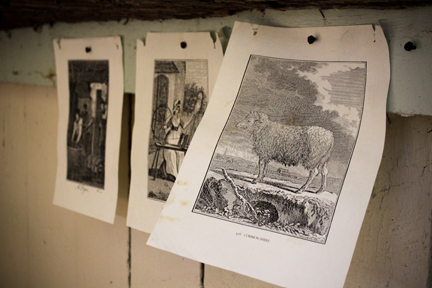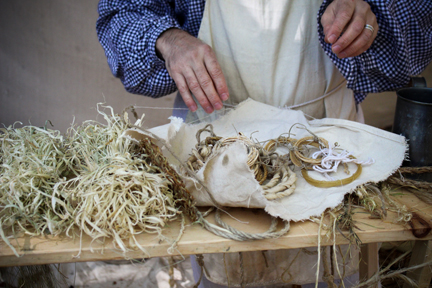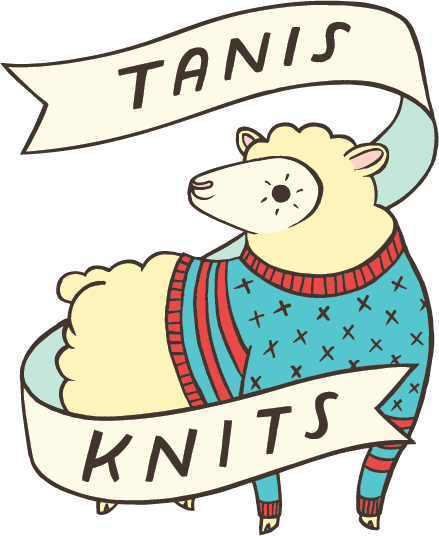This past weekend was the Rhinebeck Sheep & Wool Festival. When we lived in New York City, driving up the morning of, spending the day there, stuffing ourselves to the gills with chicken pot pie, fried artichokes and apple cider, then driving home the same night in a food coma with a trunk full of wool was easy. We didn't have to worry about where to stay, what to do if all the restaurants had crazy wait times, rabid knitters or bathroom lines.

Earlier this week I finally got home from filming my third season of Knitting Daily TV (read about that in last week's post) and all I wanted to do was spend time with my family. Northern Virginia is place rich with history, museums, trails and scenery. The leaves were stunning and we hiked our way to Great Falls on Saturday, then to the Claude Moore Colonial Farm on Sunday.
In the same vein as Williamsburg but on about 1/15th the scale, the Colonial Farm at Turkey Run is a living history museum that portrays family life on a small, low-income farm in 1771, just prior to the Revolutionary War. The popularity of the Farm is due in large part to its continuing focus on authenticity and its ongoing encouragement of both child and adult visitors to participate in the daily activities of an 18th century family farm. Experiential learning is a growing trend with most museums and the Farm has been a leader in this. Williamsburg is an entire town and an experience while this is much more focused on the life of one family on a much smaller scale.



We were lucky enough to go on a weekend during their thrice-yearly Market Fair, with activities for kids, authentic shopping, historic demos and tradespeople out practicing their craft. Obviously, I drifted to the yarn stall immediately! The lady and I talked extensively about the natural dyeing process of yarns and she was prepping to start spinning at her wheel. I've tried a lot of the natural dyes she had out on display and it was interesting to see a few of them in the natural form, rather than getting it as a powder ready-made. We shared tips and ideas and I was pleased she knew so much.





Around the corner from the yarn stall was a man making rope. "Making rope?" you ask? Yes! He was fascinating to listen to and he showed us all sorts of materials he had used to make rope (oddly similar to drop spindling, but with different materials and done without the spindle) such as white birch, mahogany bark, jute, hemp, animal intestines (yes, intestines) that made almost a wavy-like rope, flax, corn husk, birch, strawberry vine… Pretty much name it and this man had tried making rope out of it. I never knew so many materials could be made into rope and he demoed a few techniques that were the same as in knitting as far as twisting and plying. I left with a length of rope he gifted me and I'll never take the rope section at Home Depot for granted again. Making rope is more tedious than making yarn and in some cases, the lives of Colonial people depended on good, strong rope for bridges, bundling crops at harvest time and strong fences to last throughout all seasons.



Further down we came across men making both circular and rectangular baskets out of white birch strips. He wasn't as chatty as the rope or yarn people, but he had clearly been making baskets for years and each was unique. What's so great about places like Williamsburg, the Claude Moore Colonial Farm and other historic experiences, is the people stay in character and stay true to their time. Ask them if you can take a picture with your camera and they may ask "what's a camera?" This can be frustrating if you're asking about something they're demoing, but they were less strict about it at Claude Moore and more willing to share information than other places we've been to. Very family friendly, inexpensive and authentic lunches, fire pits, sword demos, puppet shows and animals made this a day we all really enjoyed. Definitely stop by if you're local.


Am I sorry I missed Rhinebeck? Sure, but not really. We had an amazing time as a family, got plenty of beautiful fall weather time outside, learned a lot and went to bed happy. Rhinbeck will be there waiting for me next year.
Over the next few weeks I'll be introducing a bunch of new patterns here on the blog, ideal for holiday knitting… Stay tuned!























